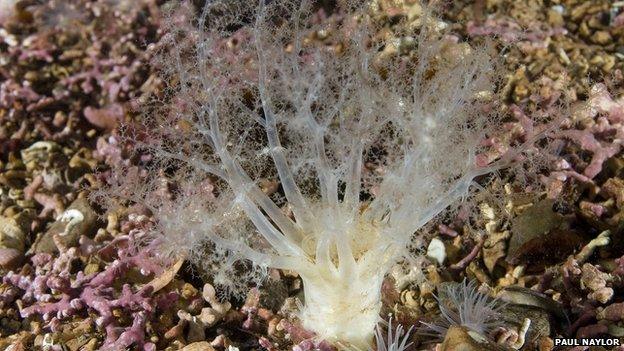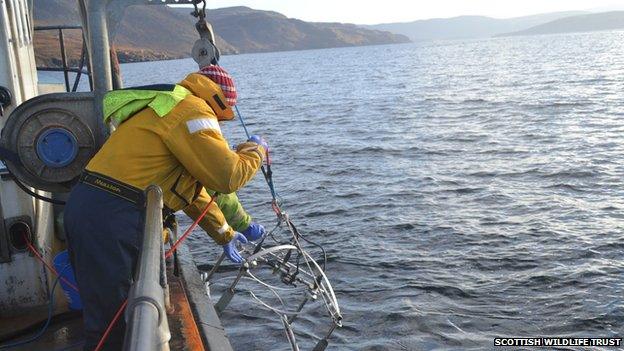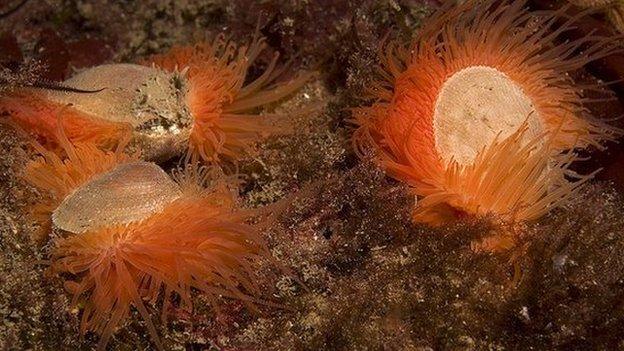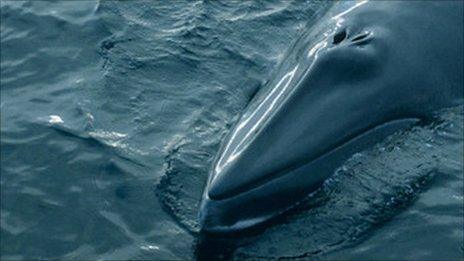New areas of coral-like seaweed found off Wester Ross
- Published

A sea cucumber on a maerl bed
New areas of a coral-like seaweed called maerl have been discovered on the seabed off Wester Ross, the Scottish Wildlife Trust (SWT) has said.
Pink-purple maerl beds offer protection to young cod, scallops and crabs.
But SWT said the slow growing seaweed was "extremely vulnerable" to disturbance.
It wants these areas in the Wester Ross Marine Protected Area to be protected from scallop dredging and bottom trawling.
The Wester Ross MPA was created earlier this year for the protection of seabed habitats such as previously known areas of maerl beds and also kelp forests and flame shell beds.
Under the terms of the protected area, SWT said maerl beds in the Wester Ross MPA must be managed to allow for their recovery as their condition was known to be poor.
The Scottish government is consulting on plans to prohibit fishing including scallop dredging and bottom trawling on certain seafloor habitats within the MPA and other protected areas.

The new maerl beds were found during survey work earlier this year
Alex Kinninmonth, SWT living seas policy officer, urged the government to prohibit the fishing.
"The survey has proved to be very important as current Scottish government proposals will leave many of these newly discovered maerl beds unprotected from damaging fishing methods like dredging.
"Now that these fragile habitats are on the map they must be included in protection plans.
"It also serves as a reminder that there are still big gaps in our knowledge of the seabed, and so there is a clear need for a more precautionary approach to protecting it."
SWT carried out the survey earlier this month in collaboration with Fauna and Flora International and members of the local community.
Evidence of maerl beds and other seabed habitats was captured using Marine Scotland-funded underwater camera equipment and expertise provided by Scottish Natural Heritage.
The new beds were identified off the coast of SWT's Ben Mor Coigach Wildlife Reserve, off Isle Martin, and near the Rhue Lighthouse at the mouth of Loch Broom.
The seaweed had previously been found between Gruinard Bay and Little Loch Broom.
- Published24 July 2014

- Published14 December 2012

- Published3 December 2012
